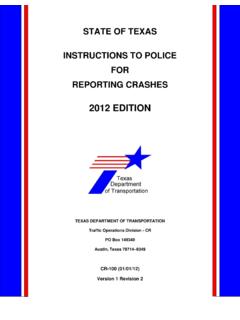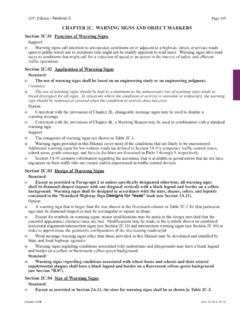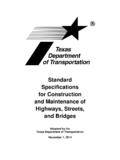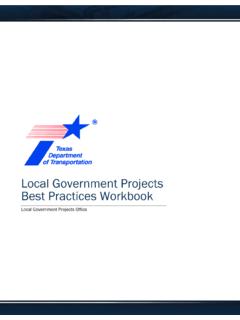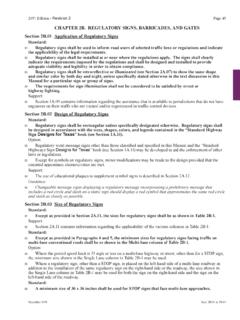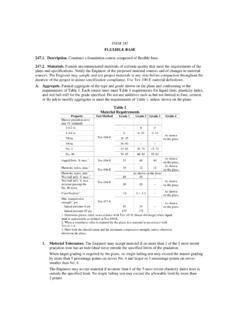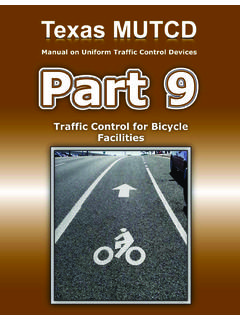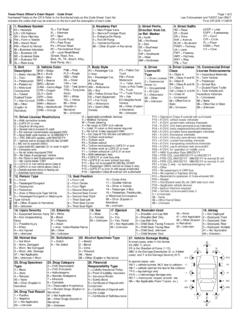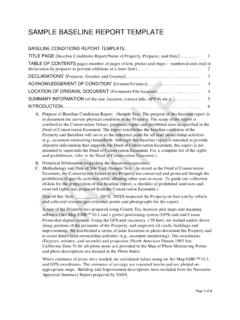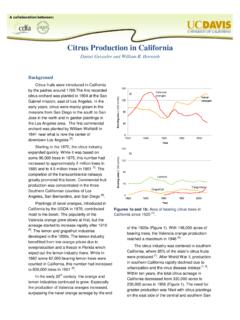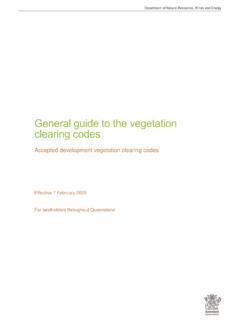Transcription of 341 Special Specification 3076 Dense-Graded Hot-Mix Asphalt
1 3076. 341. Special Specification 3076. Dense-Graded Hot-Mix Asphalt 1. DESCRIPTION. Construct a Hot-Mix Asphalt (HMA) pavement layer composed of a compacted, Dense-Graded mixture of aggregate and Asphalt binder mixed hot in a mixing plant. Payment adjustments will apply to HMA placed under this Specification unless the HMA is deemed exempt in accordance with Section , Exempt Production.. 2. MATERIALS. Furnish uncontaminated materials of uniform quality that meet the requirements of the plans and specifications. Notify the Engineer of all material sources and before changing any material source or formulation.
2 The Engineer will verify that the Specification requirements are met when the Contractor makes a source or formulation change, and may require a new laboratory mixture design, trial batch, or both. The Engineer may sample and test project materials at any time during the project to verify Specification compliance in accordance with Item 6, Control of Materials.. Aggregate. Furnish aggregates from sources that conform to the requirements shown in Table 1 and as specified in this Section. Aggregate requirements in this Section, including those shown in Table 1, may be modified or eliminated when shown on the plans.
3 Additional aggregate requirements may be specified when shown on the plans. Provide aggregate stockpiles that meet the definitions in this Section for coarse, intermediate, or fine aggregate. Aggregate from reclaimed Asphalt pavement (RAP) is not required to meet Table 1 requirements unless otherwise shown on the plans. Supply aggregates that meet the definitions in Tex-100-E for crushed gravel or crushed stone. The Engineer will designate the plant or the quarry as the sampling location. Provide samples from materials produced for the project.
4 The Engineer will establish the Surface Aggregate Classification (SAC) and perform Los Angeles abrasion, magnesium sulfate soundness, and Micro-Deval tests. Perform all other aggregate quality tests listed in Table 1. Document all test results on the mixture design report. The Engineer may perform tests on independent or split samples to verify Contractor test results. Stockpile aggregates for each source and type separately. Determine aggregate gradations for mixture design and production testing based on the washed sieve analysis given in Tex-200-F, Part II.
5 Coarse Aggregate. Coarse aggregate stockpiles must have no more than 20% material passing the No. 8. sieve. Aggregates from sources listed in the Department's Bituminous Rated Source Quality Catalog (BRSQC) are preapproved for use. Use only the rated values for Hot-Mix listed in the BRSQC. Rated values for surface treatment (ST) do not apply to coarse aggregate sources used in Hot-Mix Asphalt . For sources not listed on the Department's BRSQC: build an individual stockpile for each material;. request the Department test the stockpile for Specification compliance; and once approved, do not add material to the stockpile unless otherwise approved.
6 Provide aggregate from non-listed sources only when tested by the Engineer and approved before use. Allow 30 calendar days for the Engineer to sample, test, and report results for non-listed sources. 1 - 31. 10-19. statewide 3076. Provide coarse aggregate with at least the minimum SAC shown on the plans. SAC requirements only apply to aggregates used on the surface of travel lanes. SAC requirements apply to aggregates used on surfaces other than travel lanes when shown on the plans. The SAC for sources on the Department's Aggregate Quality Monitoring Program (AQMP) (Tex-499-A) is listed in the BRSQC.
7 Blending Class A and Class B Aggregates. Class B aggregate meeting all other requirements in Table 1. may be blended with a Class A aggregate to meet requirements for Class A materials, unless otherwise shown on the plans. Ensure that at least 50% by weight, or volume if required, of the material retained on the No. 4 sieve comes from the Class A aggregate source when blending Class A and B aggregates to meet a Class A requirement unless otherwise shown on the plans. Blend by volume if the bulk specific gravities of the Class A and B aggregates differ by more than Coarse aggregate from RAP and Recycled Asphalt Shingles (RAS) will be considered as Class B aggregate for blending purposes.
8 The Engineer may perform tests at any time during production, when the Contractor blends Class A and B. aggregates to meet a Class A requirement, to ensure that at least 50% by weight, or volume if required, of the material retained on the No. 4 sieve comes from the Class A aggregate source. The Engineer will use the Department's mix design template, when electing to verify conformance, to calculate the percent of Class A. aggregate retained on the No. 4 sieve by inputting the bin percentages shown from readouts in the control room at the time of production and stockpile gradations measured at the time of production.
9 The Engineer may determine the gradations based on either washed or dry sieve analysis from samples obtained from individual aggregate cold feed bins or aggregate stockpiles. The Engineer may perform spot checks using the gradations supplied by the Contractor on the mixture design report as an input for the template; however, a failing spot check will require confirmation with a stockpile gradation determined by the Engineer. Micro-Deval Abrasion. The Engineer will perform a minimum of one Micro-Deval abrasion test in accordance with Tex-461-A for each coarse aggregate source used in the mixture design that has a Rated Source Soundness Magnesium (RSSM) loss value greater than 15 as listed in the BRSQC.
10 The Engineer will perform testing before the start of production and may perform additional testing at any time during production. The Engineer may obtain the coarse aggregate samples from each coarse aggregate source or may require the Contractor to obtain the samples. The Engineer may waive all Micro-Deval testing based on a satisfactory test history of the same aggregate source. The Engineer will estimate the magnesium sulfate soundness loss for each coarse aggregate source, when tested, using the following formula: Mgest.

